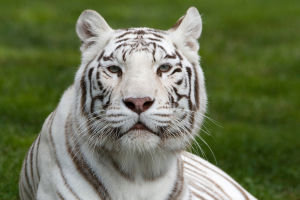The most attractive thing about orioles is their yellow plumage. The feathers of the male bird are golden yellow, shiny, and very bright; the feathers of the female are yellow-green with a little gray; the young bird is similar to the female bird.
But has more black feather stem lines. Both male and female orioles have black wings and the middle of their tails. On both sides of the head, there are broad black stripes. These black artful decorations make the oriole gorgeous and not ostentatious.
Orioles are not only extraordinary in appearance but also cherish their feathers very much. They are mainly active in the canopy of tall trees and rarely fall to the ground, so they are very clean.
They like to live in groups and like to walk through the woods in pairs. Orioles fly on the wings of the breeze on a warm spring day, like clouds floating in the air. Their bodies are beautiful and elegant, and their feathers are colorful.
Orioles are not only born with elegant appearances but also born singers. Like other birds, the vocal organ of orioles is also a vocal tube, which is specially developed from the wall of the trachea at the junction of the trachea and bronchi.
Their vocal muscles are particularly developed. Through the ingenious adjustment of the nervous system to the vocal muscles, the singing of orioles is as clear and mellow as running water.
The developmental characteristics of individual singing behaviors of orioles are very similar to the language learning process of humans.
The function of songs is similar to that of the human language system, which is conducive to communication and connection between people. The difference is that the singing behavior of orioles has obvious sex differences and seasonal changes.
Orioles sing most often on peaceful mornings. Male and female orioles sing or sing to bond and exchange information, while baby orioles seek food from their parents by singing.
During the breeding season, with the development of gonads and the stimulation of sex hormones, male orioles are more active in courtship and display. They sing softly all day long, and their voices are very elastic and magnetic.
The oriole is an arboreal bird. Males and females build nests in tree branches out of bark and grass stems. The nest is a hanging basket-like nest, very tightly woven. In front of the nest, male and female orioles fly around the trees one by one, looking for a place to build their nests.
After the nest is selected, the male and female orioles will have a love song duel on different trees in the nest area.
Of course, like most birds, the male is always trying to catch his prey. In the depths of love, the male and female orioles will play and fly in the air, and eventually live together.
Orioles are very loving "couples" who do not allow third parties to intervene and are very territorial. If other orioles ignore the warning and invade the nest recklessly, they will immediately rise and attack until the intruder is driven out.
The oriole is a well-known insectivorous and beneficial bird. They often forage in woodlands, farmland, and gardens, and their food consists mostly of moth and butterfly larvae, crickets, locusts, and other pests.
Especially during the brooding period, orioles can eliminate more pests. It is said that to feed a nest of chicks, the mother bird has to catch one to two hundred pests every day.
Judging from the 15-day brooding period, a pair of orioles eliminated two or three thousand kinds of pests for humans during the brooding period!


